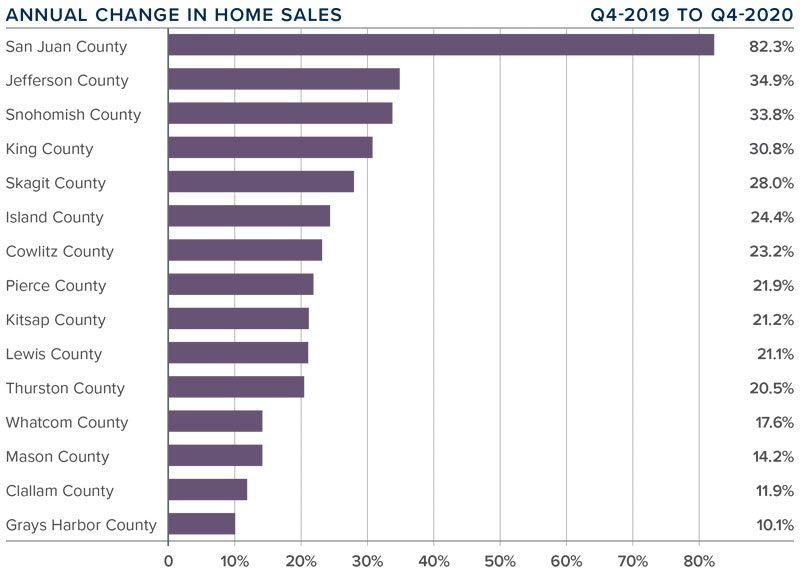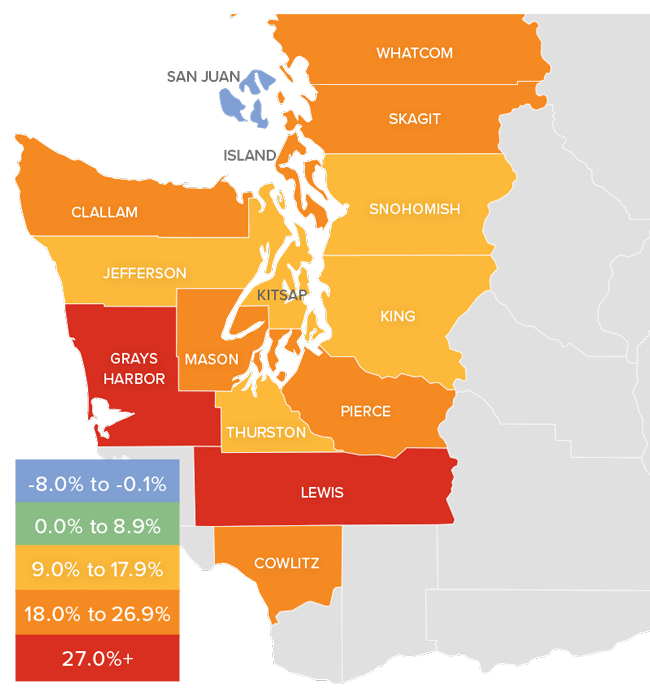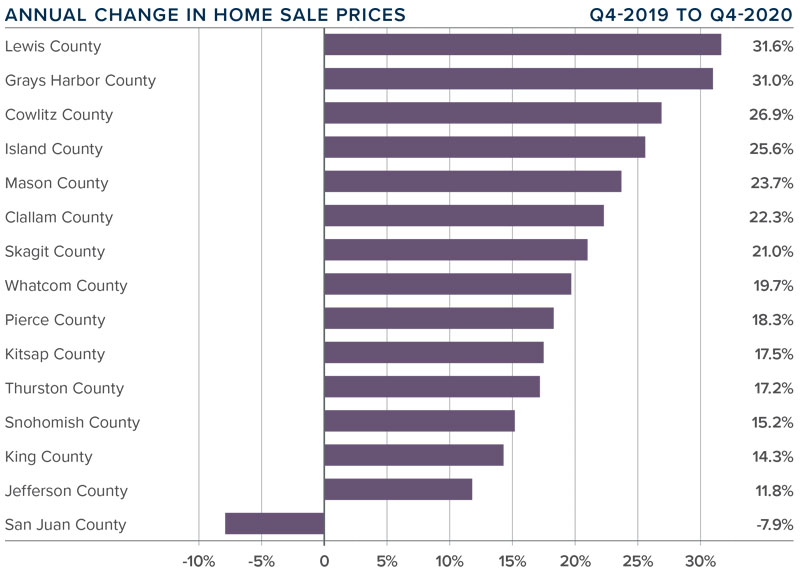Windermere offices have continued to support their communities throughout the COVID-19 pandemic, raising money for the Windermere Foundation, which has provided over $43 million in funding to support low-income and homeless families throughout the Western U.S. since 1989. Here are some highlights from the past holiday season.
Windermere Whatcom Donates 84 Thanksgiving Boxes
For over 20 years, Windermere Whatcom has donated Thanksgiving boxes to local school districts and organizations. These boxes contain all the fixings for a Thanksgiving feast, from sparkling cider and pumpkin pie to turkey roaster pans and a recipe book. The meals benefit families in need of a warm Thanksgiving meal. Agents at Whatcom’s five offices select the recipient organizations, then agents and staff are assigned items to fulfill depending on the number of meals needed. Keeping COVID-19 guidelines in mind, agents worked in small groups/shifts to pack the boxes of food and supplies on the day of delivery. In total, 84 Thanksgiving meals were donated on November 23 and 24, 2020.

Picture L to R: Alex Stredicke & Ken Gustafson
Windermere Abode Supports Tacoma Rescue Mission
Every Friday since March of 2020, Windermere Abode in Tacoma, WA has helped the Tacoma Rescue Mission serve sandwiches and snacks. After speaking with Windermere agent Melo Hogan, Broker/Co-Owner of Windermere Abode Anne Jones learned that throughout the COVID-19 pandemic, the organization had been losing volunteers and needed to provide to-go meals for the community members they support. “The coolest thing about this program is we’ve invited our community to participate,” said Jones. “That’s how we’ve kept it going and literally have delivered thousands of sandwiches. We’ve had a few Fridays with two fully-loaded SUVs.”

Pictured: Melo Hogan
Windermere Greenwood Donates $4,418 to WA-BLOC
In the summer of 2020, the agents and staff at Windermere Greenwood were looking for ways to support grassroots, Black-led organizations in underserved communities and youth. When they came across WA-BLOC (Building Leaders of Change), they jumped at the chance to support the organization. WA-BLOC works with students in South Seattle, igniting transformation and building leaders of change through revolutionary education and social justice leadership development. Understanding that the pandemic would impact students’ learning ability, the Greenwood office wanted to contribute to help make distanced learning more equitable. Totaling $4,418, their donations went towards purchasing laptops, wi-fi hotspots, school supplies, tutors, school lunches, and more.

Windermere Greenwood’s total amount raised in support of local organization WA-BLOC
Windermere Eastlake Gifts $5,000 to St. Francis House
Agents and staff at Windermere Eastlake in Seattle came together this holiday season to support low income and homeless families in their community through St. Francis House, an organization dedicated to serving the homeless population of King County. Eastlake donated $5,000 to the organization to distribute holiday gift packages to families including a new blanket, a new game, and a grocery gift card. Each child received a pair of socks, a new toy, and a book. So far, 375 families have received their gift.

A selection of toys distributed by St. Francis House through Windermere Eastlake’s donation
To find out more about the Windermere Foundation or to make a donation, please visit the Foundation’s website here: Windermere Foundation
 Facebook
Facebook
 X
X
 Pinterest
Pinterest
 Copy Link
Copy Link




































